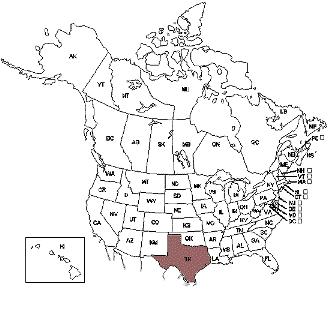Daedalochila polita - Suave Liptooth
Habitat
There is not a lot of information available about the habitat of Daedalochila polita besides the state they reside in, which is the extremely hot state of Texas.
It may be helpful to look at a more broad view of the ancestral lines of the snail to get a better feel for the general habitat and the adaptations that have arose due to the environment. The Family Polygyridae can be found in North America and ranges from Alaska, to eastern Canada and also down south into regions of northern Mexico (Pilsbry, 1940). Polygyridae are mainly found in wooded humid regions and temperate climates (Burch, 1962). Most species take cover from the hot climate by living under leaves, dead wood, or stones during the day and will proceed to come out at night when cool and moist living conditions are present (Pilsbry, 1940). During the night the snails come out to feed, mainly on mycelia of fungi, which is the vegetative part of fungus that resembles a white web like mass (Pilsbry, 1940).

Evidence has begun to build which explains the large diversity of snails. The large diversity can be attributed to their small total range of living due to poor mobilization and their hibernation-like protective mechanisms due to the climate that they live in (Wilbur, 1985). The diversity of snails can also be attributed to islands and mountain ranges that have isolated these amazing creatures that have shown the ability to maintain populations in very small areas (Wilbur, 1985). When looking at different regions of the world that have successional-stage plant communities, it is common to see a pattern for land snails to be restricted to certain plant communities, which allows a fairly high number of land snail species to be found in a single area (Wilbur, 1985).
The habitat of the Daedalochila directly influences the adaptations that this Genus has made.